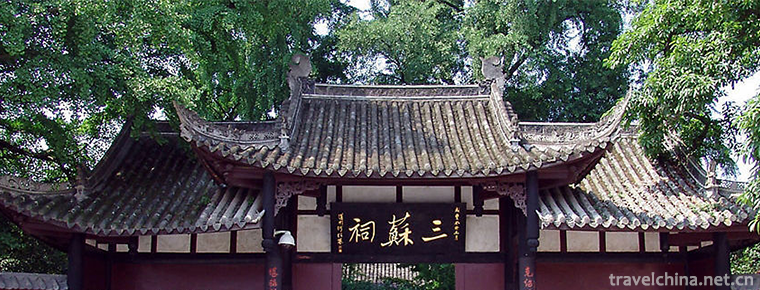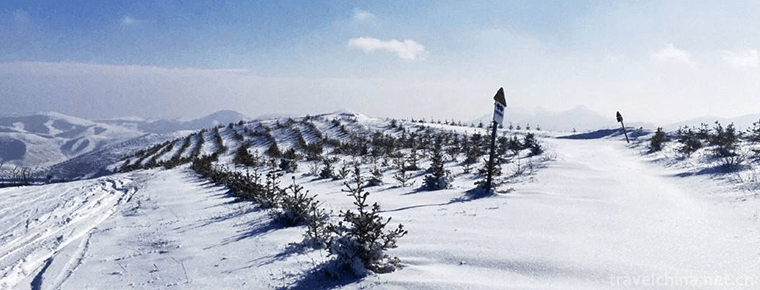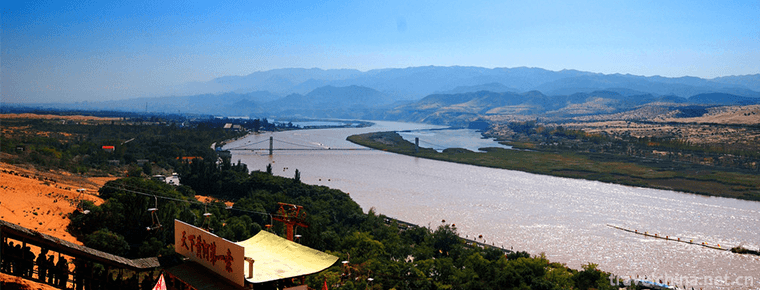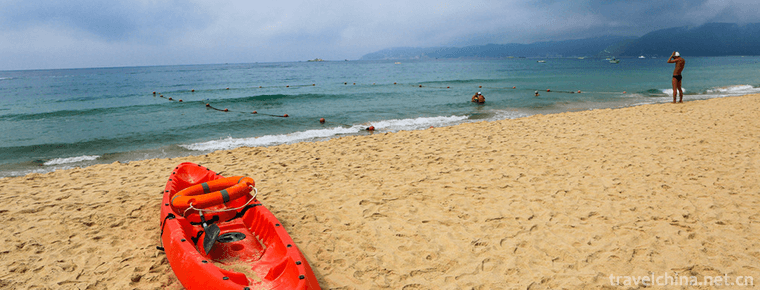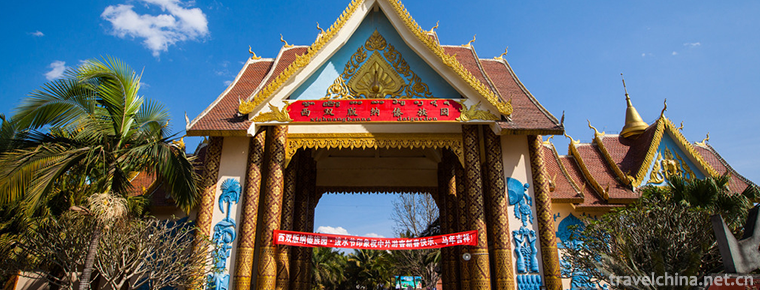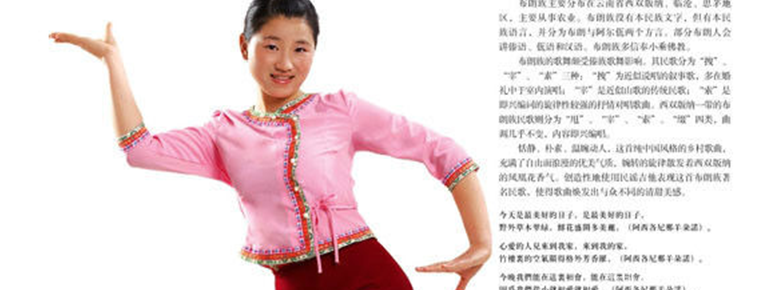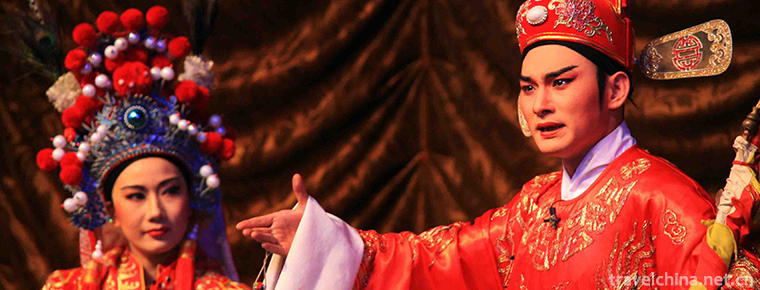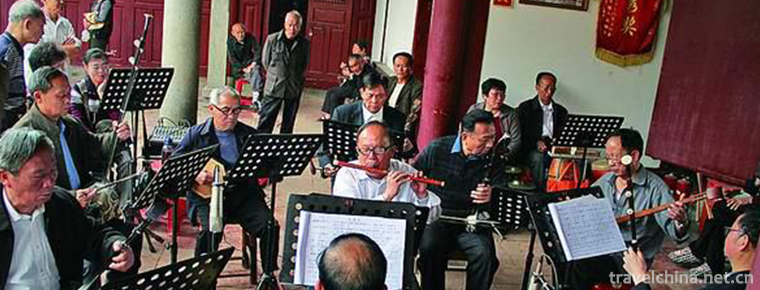Buyi Eight tone Sitting Singing
Buyi Eight-tone Sitting Singing
Buyi eight-tone sitting-singing, also known as "Buyi eight-tone", is a form of folk music and singing handed down from generation to generation by the Buyi people. The so-called Buyi Bayin refers to the traditional rap and singing art which is spread in the towns along the Yangtze River and parts of the Nanpanjiang River Valley in Xingyi City, southwestern Guizhou Province, which is the Buyi and Miao Autonomous Prefecture. Buyi Bayin is also called "Eight-tone Sitting Singing". There are 8 to 14 performers who sing Sheng, Dan, Jing and Ugly operas without makeup. It is named for its eight musical instruments such as calf bone, bamboo tubular piano, straight flute, moon piano, three strings, mango gong, gourd, Piccolo and so on. For thousands of years, it has been inherited in villages and villages in Nanpan River Basin. According to legend, the prototype of Buyi Bayin belongs to court music, mainly playing. After the Yuan and Ming Dynasties, due to the aesthetic consciousness of the Buyi nationality, it gradually developed into a form of music accompanied by silk and bamboo instruments.
On May 20, 2006, the opera was approved by the State Council and listed in the first batch of national intangible cultural heritage list.
Historical origin
According to historical records, as early as the Tang and Song Dynasties, Bayin was spread in Xingyi, Anlong, Ceheng, Wangmo and other Bouyei areas in Guizhou Province. Zhou Qufei of the Song Dynasty said in "Answer to Pingnan Music from the Outer Ridges": "All the counties in Guangxi have multi-purpose music, the city corridor villages, sacrifices, marriages and funerals, all of which need no music. Although farming is accompanied by oral music, the sound of drums and flutes is heard in the sky. Every year, Qiucheng enrolls musicians to teach his disciples and listen to their rhymes, but they are too despicable to listen. Pingnan County, Weixun Prefecture, is an ancient Gongzhou. There are old church halls, which can be renovated. Sometimes there are officials in the church halls. They leave in disorder to Pingnan and teach the local people to enjoy themselves. So far, they can spread their voices. "In the Yuan and Ming Dynasties, eight-tone singing added folk custom and festive content, and absorbed the characteristics of other operas, greatly enriching the content of singing. By the Qing Dynasty, "Eight-tone" was one of the operas that was singing, singing Sheng, Dan, Jing and Ugly, without makeup... "(According to Barnyard Bill). So far, eight tones have developed into a form of musical singing. According to relevant records, Buyi Bayin was once prevalent in the Ming and Qing Dynasties. In the villages of Buyi nationality in Panjiang valley, there is a teaching music hall called "Eight-tone Hall", which specializes in teaching the skills of Buyi Eight-tone. Over three hundred eight-tone teams perform eight-tone sitting and singing. After the founding of New China, the Buyi Bayin Team of Xingyi City has been invited to perform at home and abroad for many times. It has been praised as "the wonderful flower of Panjiang", "the sound of the world, the sound of nature", "the living fossil of sound" and "the artistic pearl by the South Panjiang River".
regional environment
Located in the region: Buyi eight-tone sitting (abbreviated as Buyi eight-tone) is mainly spread in the towns along the Yangtze River and parts of the Nanpan River Basin in Xingyi City, southwestern Guizhou Province.
Geographical environment: Xingyi City is located in the junction of Yunnan, Guizhou and Guizhou provinces (districts), located between 104 32 to 105 11 in the East and 24 38 to 25 23 in the North latitude. It is the center of Kun (Ming) - Gui (Yang) - Nan (Ning) economic circle, known It is the political, economic, cultural, information center and government seat of Guizhou Southwest Prefecture. It is an advanced county (city) with good geographical location, transportation and resource advantages. The whole city covers an area of 2911.1 square kilometers, with a total population of about 756,200, including about 179,500 ethnic minorities, with a large population of over 30 ethnic minorities, such as Buyi, Miao, Yi, Hui, Zhuang and Mongolian. Buyi population accounts for more than 70% of the minority population, and is a typical multi-ethnic area.
There are famous and typical multi-level karst natural landscape national scenic spot-Maling River Canyon, which is famous for its cracks and valleys, waterfalls hanging, and calcium carbonate wall hanging. There are millions of strange peaks which stretch for hundreds of miles. They are magnificent and magnificent, with dense and peculiar peaks and perfect overall shape. They have been praised by Xu Xiake, a geographer and traveler of the Ming Dynasty. Thousands of miles, for the southwest shape Sheng, "how many peaks in the world, only here peak forest", has a unique conical karst geological landscape - Wanfeng forest; there are vast smoke, mountains, beautiful lake scenery, the plateau of the five major freshwater lakes in the country - Wanfeng Lake and many other natural landscapes and strong national customs.
Because Xingyi is a low latitude and high altitude area with an average elevation of 1100 meters, an average annual rainfall of about 1512 mm, a long sunshine time, an average annual temperature of 16.8 degrees C, and an annual frost-free period of about 315 days, it has obvious subtropical seasonal rheumatic and humid climate characteristics, such as "winter without severe cold, summer without severe heat, winter with little snow, four seasons like spring, beautiful environment", which is known as "Xiaochuncheng". It is an ideal place for tourism, leisure and vacation.
development history
In the heyday of the development of octave singing, another new form of literature and art emerged quietly. This is Buyi opera. Buyi Opera came into being in the early Qing Dynasty, and there are different opinions about when it came into being. One is based on the genealogy of the old theatre artists, probably in the Qianlong period. The other is based on the records of Xingyi County Chronicle. In the early years of Guangxu (1875), Wang Shoushan, a clan member of Xingyi's kingly chieftain, initiated the production of special costumes for the first time by many people and performed on the stage in Bajie's Laochangba. So far, Buyi Opera has really completed her development, not only with melody, voice, performance, but also with clothing, becoming one of the plays. Buyi Opera is developed on the basis of "Eight-tone Chorus" (see "Guizhou Volume of Chinese Opera Music Integration oBuyi Opera Music Scroll"). From the performance point of view, Bouyei opera has actions, make-up, special clothing, and these are exactly what "eight-tone concert" does not have. From this point of view, performance is the main difference between the two. This has resulted in two different forms of culture and art.
From pure instrumental music to performance singing, to eight-tone concerto, and then to Buyi opera, forming a unique picture of four musical forms of the same clan. Moreover, these four forms of music have not been washed out by the wave of history, but it is very valuable to form a "four music in one hall" at the same time. This provides a living specimen for the study of the evolution and development of folk literature and art.
artistic characteristics
Whenever people talk about "Buyi eight tones" and "eight tones sitting and singing", they always ask: What does "eight tones" mean? Why is she called Bayin? What does she represent? We know that in the history of Chinese music, the term "eight tones" first appeared in the Zhou and Qin Dynasties. At that time, the musical instruments were divided into eight categories according to the different materials of production: gold, stone, earth, leather, silk, wood, oak and bamboo. This is the "eight tones". Later it was generally referred to as an instrument. What is the relationship between the "eight tones" of "Buyi eight tones" and the "eight tones" of Chinese music history? The "Eight Tones" of "Buyi Eight Tones" and "Eight Tones Chorus" are now interpreted more consistently as eight kinds of musical instruments, namely, Xiaoguan, Niujiaohu, Huluqin, Yueqin, drums, Baobao gongs, pony gongs and hairpins.
"Eight tones" is the name of an instrumental group. Eight-tone performance is usually a ensemble. When Zhou Qufei of Southern Song Dynasty talked about "eight tones" in his book Answer to the Ridge, he said, "Pingnan County, Weixun Prefecture, is an ancient Gongzhou, with an old teaching hall, which is very happy and different. Sometimes they get officials by the church hall and leave in disorder to Pingnan to teach the local people to enjoy music. So far, they can spread their voices. "Whether it is to say that"music is very different"or"teach the native people to combine music", it is to say that there are many orchestral instruments and the form of performance is ensemble. Judging from the music and folk performances handed down now, they all prove the characteristics of "Heyue".
Buyi eight-tone sitting and singing is called "Wanbo flute" in Buyi language, which means playing and singing. Eight-tone sitting-singing performances are composed of eight people holding eight kinds of musical instruments, including Niuguhu (Niujiaohu), Huluqin (Huluhu), Yueqin, bamboo drum (bamboo drum), chopper, hairpin, Baobao gong, pony Gong and so on. The performance uses the first person's "jump in" to narrate the story, and the third person's "jump out" to explain the story. There are also cases where the Buyi instruments such as Le Lang, Le You and Muye are added to accompany the performance. When singing, male artists mostly use high octaves, while women sing in the original tune, which can not only produce strong pitch and timbre contrast, but also increase the interest of singing. When singing, the voice is in Buyi and the Taobai is in Chinese. There are two kinds of voices: small voice and peaceful voice. The members of the band share the roles. There are more than thirty tunes, such as right tone, right tone, walking tone, road board, long tone, inverted long tone, rebound tone, tea tone and wine tone, which can be played alone or sung while playing.
The forms of expression include sitting, singing and dramatic performance. "Eight-tone sitting singing" melody is simple and smooth, melodious and melodious. It is often performed on national festivals, weddings, funerals, marriages, houses, birthday celebrations and other occasions. It is a national rap art form that is deeply loved by the Buyi people. The most representative traditional programs are "Buyi Marriage Customs", "Congratulations Hall", "Huxi and Nanxiang", "Reception Tune", "Singing Wang Yulian Biography", "Toast Song", "Liang Shanbo and Zhu Yingtai" and more than 40, including "Fumantang", "Happy Birthday Hall", "Goran", "Baitang Tune", "Wanlang", "Brothers and Sisters Tune" and "Come and Go"; Segments from Nanyang, Buyi Opera Sayi Affection, the final song Shengshi Diao: Angyang, etc. are mainly based on Buyi's folk oral literature, folk music and rap art. They show Buyi people's love for life, their yearning for harvest, their pursuit of love and their criticism of ugliness. Because of its long history, euphemism and elegance, and strong national characteristics, it is known as the living fossil of sound and the sound of nature.
Inheritance value
Buyi eight-tone sitting-singing developed from pure instrumental music to performance singing, to eight-tone concerto, and then extended to Buyi opera, forming a unique picture of four musical forms of the same clan. Moreover, these four forms of music have not been washed out by the waves of history. At present, they exist at the same time and form a "four-music-in-one hall", which is very valuable. This provides a living specimen for the study of the evolution and development of folk literature and art. On May 20, 2006, the opera was approved by the State Council and listed in the first batch of national intangible cultural heritage list.
The Buyi eight-tone sitting-singing is gradually created and formed by the Buyi people in their long-term production and life practice. It is deeply rooted in the Buyi people, has distinct Buyi characteristics and broad mass base, and is the representative of excellent national culture. It can be said that the eight-tone sitting singing is not only the crystallization of the wisdom of the Buyi people, but also a treasure in the treasure house of Chinese folk art.
protective measures
The state attaches great importance to the protection of intangible cultural heritage. On May 20, 2006, the opera was approved by the State Council and listed in the first batch of national intangible cultural heritage list.

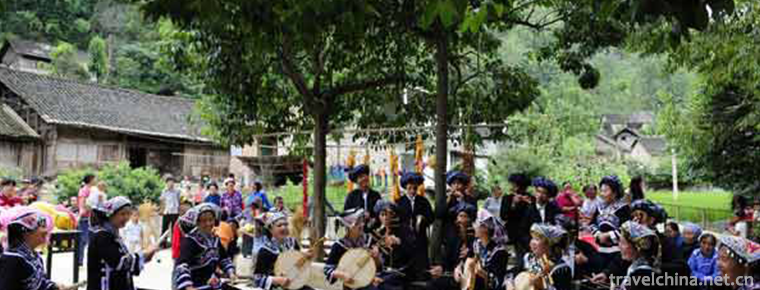
-
Sansu Temple Scenic Area
Sansu Temple Scenic Area is located in the west of Meishan City, Sichuan Province. It is a national AAAA-level tourist attraction, a national key cultural relics protection unit, and a national second.
Views: 94 Time 2018-12-19 -
Chongli Wanlong Skiing Ground
Wanlong ski resort is located in Honghua Liang, Chongli District, Zhangjiakou City, Hebei Province. It covers an area of more than 30 square kilometers, with the highest elevation of 2110.3 meters and.
Views: 202 Time 2019-01-06 -
Scenic Spot of the Source of the Yellow River
Kariqu, one of the sources of the Yellow River, started with five springs, and Maqu, the other with only one springs. This is the source area of the Yellow River. Tourists here can't imagine that the .
Views: 175 Time 2019-01-18 -
Longwan Seaside Scenic Area
Longwan Beach, also known as Longwan Beach Scenic Area, spans Xingcheng City and Longgang District. The total length of the coastline is more than 3000 meters, covering an area of 10.9 square kilomete.
Views: 131 Time 2019-02-06 -
Western Royal Tombs of the Qing Dynasty
Xiling Tomb of Qing Dynasty is located at the foot of Yongning Mountain, 15 kilometers west of Yixian Town, Baoding City, Hebei Province, more than 120 kilometers away from Beijing.
Views: 183 Time 2019-02-07 -
Tianma Island Tourist Area
Shandong Tianma Island Tourist Area is composed of Ma Qi Mountain and Tianhu Lake. It is located 16 kilometers northeast of Junnan County Town, Linyi City..
Views: 340 Time 2019-02-21 -
The Dai Garden of Xishuangbanna
The Dai Garden is called Xishuangbanna Dai Garden. Located in Xishuangbanna Olive Dam, Yunnan Province, China. There are five Dai Natural Villages with the best preservation in China.
Views: 175 Time 2019-02-25 -
Browns Folk Songs
The folk songs of the Browns are rich in content and many melodies. Every time they get married, move to a new house, celebrate New Year's Day or work, young people .
Views: 170 Time 2019-04-04 -
Chao Opera
Chaozhou Opera, known as "Chao Diao", "Chao Yin Opera" and "Bai Zizi Opera", was widely spread in Zhao'an, Yunxiao, Pinghe, Dongshan, Zhangpu and Nanjing of southern Fuji.
Views: 165 Time 2019-04-16 -
Puxian Ten Sounds and Eight Musics
Puxian Ten-tone Eight Music is not only the traditional folk art folk rap music in Putian area, but also the instrumental music. Ten tones, also known as ten times, are a comprehensive art of instrume.
Views: 152 Time 2019-06-09 -
Leshan Sports
In 2018, Leshan City organized a team to participate in the 13th Sichuan Provincial Games and won 19 gold medals, 25 silver medals and 47 bronze medals. 63 provincial-level sports fitness projects were established, and 279 municipal level national fitness.
Views: 301 Time 2020-12-17 -
Leshan transportation
Leshan City has convenient transportation. In the 12th Five Year Plan, Leshan City proposed to implement the "100 billion yuan transportation project", including "two airlines (comprehensive development of Minjiang aviation and power and Leshan Airport).
Views: 349 Time 2020-12-17
